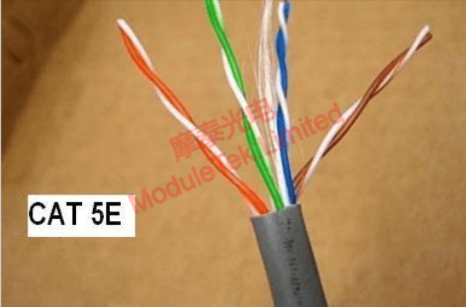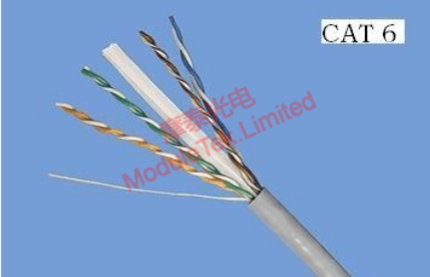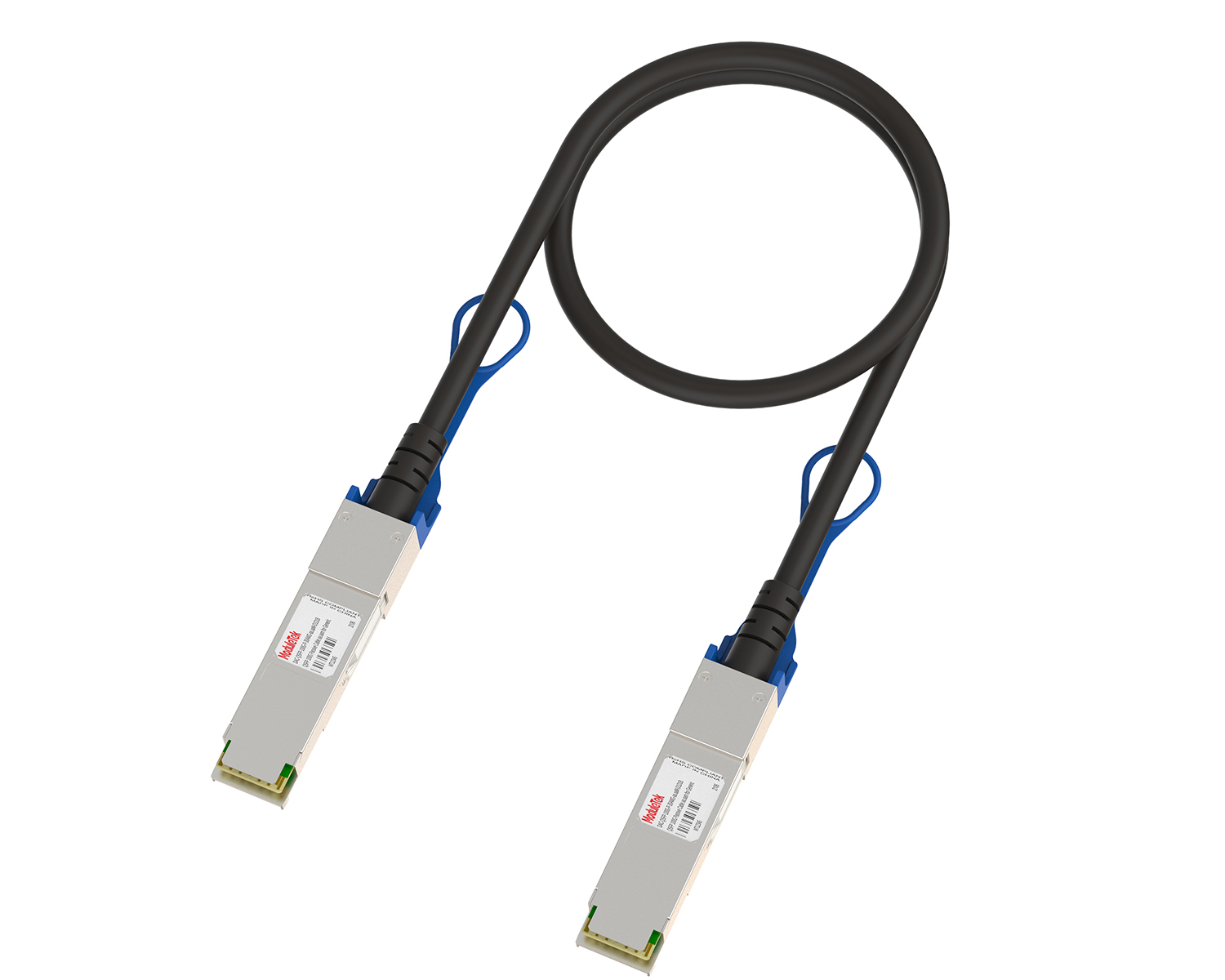Recognizing category 5 and category 6 network cables
Time: 2023-12-07
Network cable, also known as twisted pair cable, ISO/IEC 11801 defines different quality levels for network cable, such as Category III, IV, V, VI, VII, VIII, etc. The larger the number, the newer the version, the better the performance and the stronger the transmission capability. At present, category three and four network cable has been replaced by category five network cable, category seven and eight have not been popularized, therefore, here we mainly introduce category five and six network cable.
1. Category 5 cable

Figure 1 Category 5 cable
Currently commonly used Category 5 cable is identified as CAT 5E, i.e., Super Category 5 cable, with a bandwidth of 155M, which can be used for 100M and Gigabit Ethernet data transmission, using four winding pairs and one tensile wire, EIA/TIA cabling standards provide for two kinds of twisted-pair wire sequence 568A and 568B, commonly used is the T568B standard. Bare copper wire diameter of 0.51mm (gauge 24AWG), insulated wire diameter of 0.92mm, cable diameter of 5mm.
• T568A wire sequence is : white-green, green, white-orange, blue, white-blue, orange, white-brown, brown.
• T568A wire order of the scope of application: this connection is used for network equipment need to cross interconnection occasions, the so-called cross refers to one end of the cable and the other end of the cable and the RJ45 cable plug connection is different, one end of the cable according to the T568A wire order, the other end of the cable according to the T568B wire order, that is, there are several cables at the other end of the cable is the first to do the cross before receiving the RJ45 plug up, the applicable connection occasions are: computers and other computer equipment, the cable diameter of 0.92mm, the cable diameter of 5mm. Applicable connection occasions are: computers and computers, called peer-to-peer connection, that is, between two computers can pass data to each other only through a network cable connection; hubs and hubs; switches and switches.
• The T568B wire sequence is: white-orange, orange, white-green, blue, white-blue, green, white-brown, brown.
• The scope of application of T568B wiring sequence: direct interconnection line interconnection, both ends of the network cable are connected according to T568B, computer and ADSL cat; ADSL cat and WAN port of ADSL router; computer and LAN port of ADSL router; computer and hub or switch.
2. Category 6 network cable

Figure 2 Category 6 network cable
Category 6 cable has two specifications, CAT 6 and CAT 6A, CAT 6A has better performance, which are described below.
CAT 6 bandwidth of 250M, used to set up Gigabit Ethernet, on both sides of the device has a better electrical signal compensation function, but also able to transmit 2.5G, 5G or even 10G rate signals, but the maximum distance when transmitting the 10G rate is usually less than 50 meters.
CAT 6 differs from CAT 5E in form and structure, not only by the addition of the insulating crossbones, which place the four pairs of twisted-pair wires in four separate grooves in the crossbones, but also by a thicker diameter of the cable. The cross backbone in the center of the cable snaps the four pairs of twisted pair wires into the grooves of the backbone, keeping the four pairs of twisted pair wires in a relative position and improving the cable's balanced characteristics and crosstalk attenuation. Category 6 unshielded twisted-pair cablehas a bare copper wire diameter of 0.57mm (23AWG gauge), an insulated wire diameter of 1.02mm, and a cable diameter of 6.53mm.
CAT 6A has a bandwidth of 500MHz and a transmission speed of 10Gbps, and is used to set up 10Gbps Ethernet. This cable, together with the 10Gb Ethernet port SFP-10GE-T, can expand the 10G rate signal transmission distance to 100 meters. Subsequently, as the network is upgraded, there will be more and more scenarios applying to CAT 6A network cables.
3. Summary
The specifications and prices of different types of cables vary greatly, and their applications are also very different, so they should be carefully screened when choosing them. If you consider subsequent network upgrades, you can choose higher specification cables to avoid re-laying them when upgrading, which will increase the cost.
If you have any questions about the above content, you can contact us by Email : web@moduletek.com

 40G/100G Optical Transceivers
40G/100G Optical Transceivers 10G/25G Optical Transceivers
10G/25G Optical Transceivers 155M/622M/2.5G Optical Transceivers
155M/622M/2.5G Optical Transceivers 100M/1G Optical Transceivers
100M/1G Optical Transceivers FC 16G/32G Optical Transceivers
FC 16G/32G Optical Transceivers CWDM/DWDM Optical Transceivers
CWDM/DWDM Optical Transceivers 100M/1G/10G Coppers
100M/1G/10G Coppers Active Cable AOC
Active Cable AOC Direct Attach Cable DAC
Direct Attach Cable DAC Regular/MTP-MPO Fiber Patch Cords
Regular/MTP-MPO Fiber Patch Cords MT2011
MT2011 MT2010
MT2010 CodingBox
CodingBox






